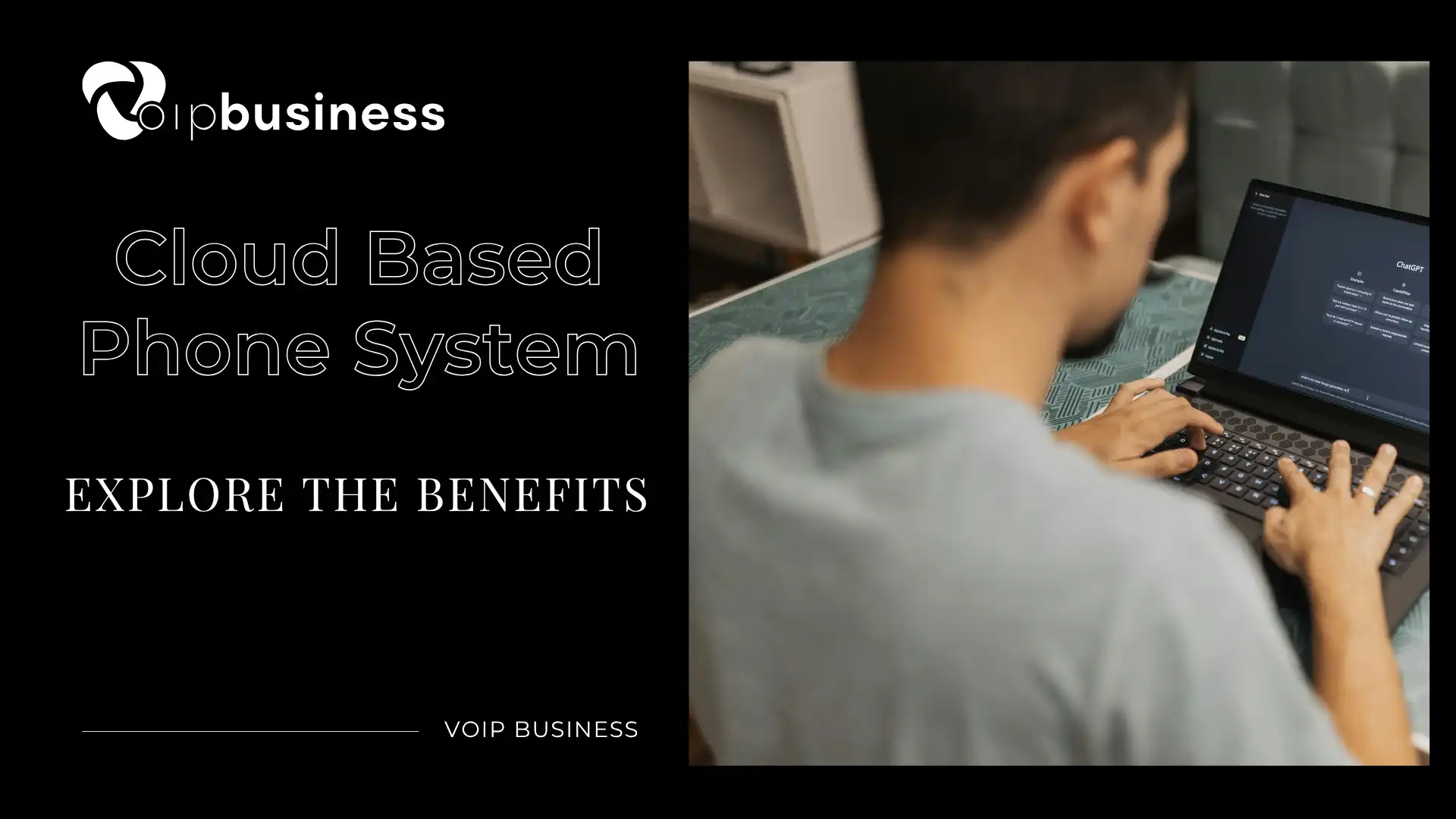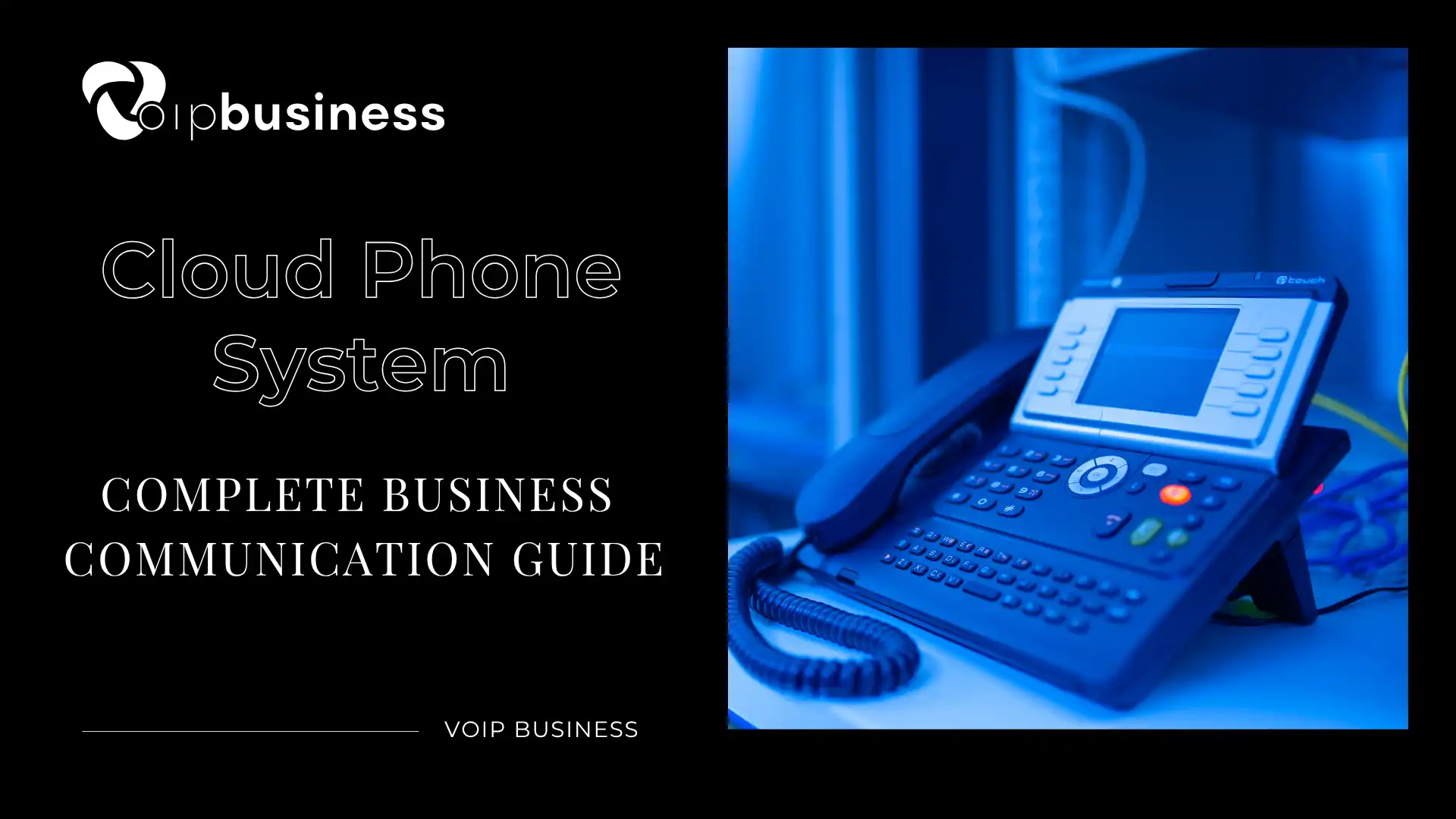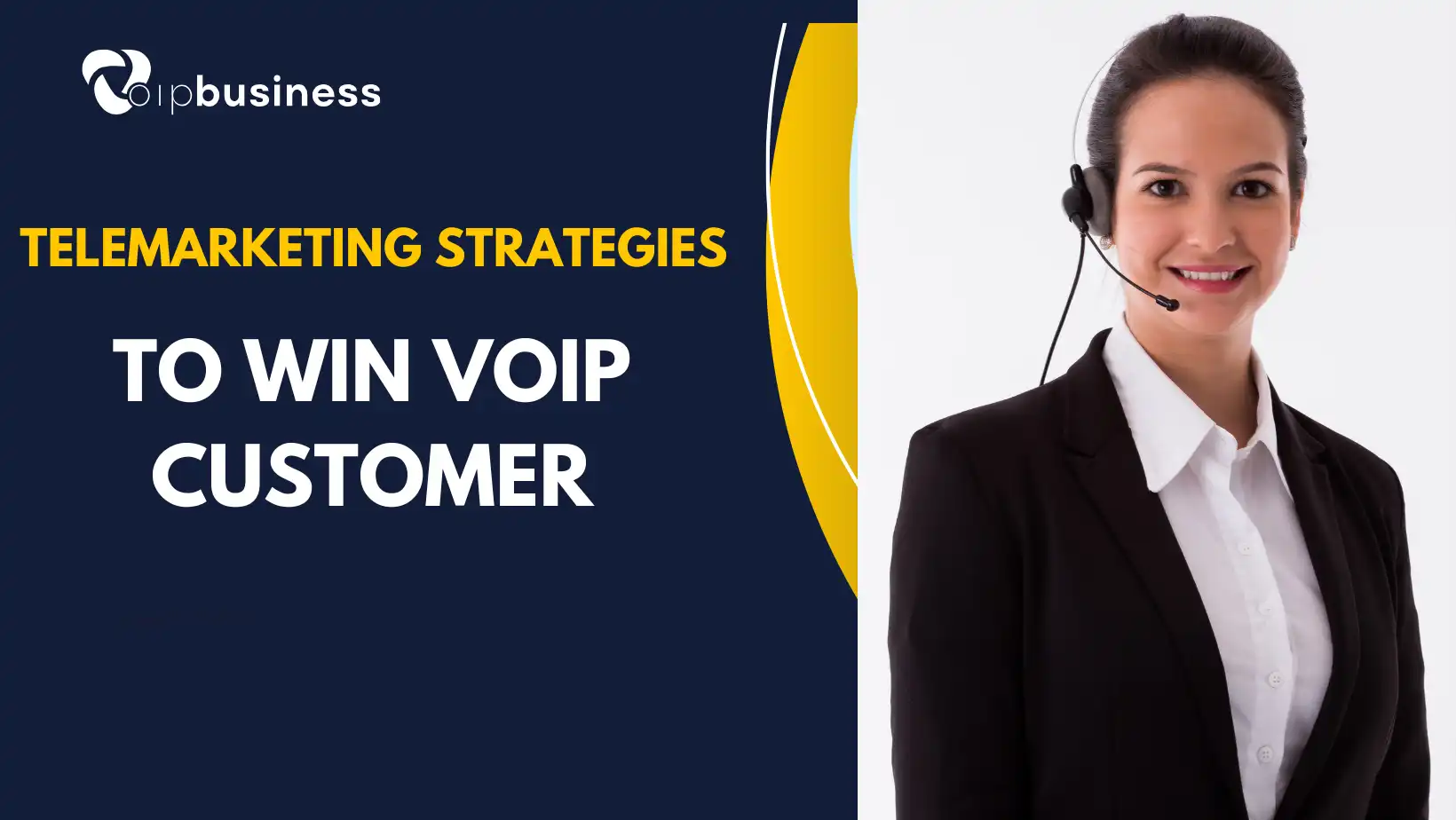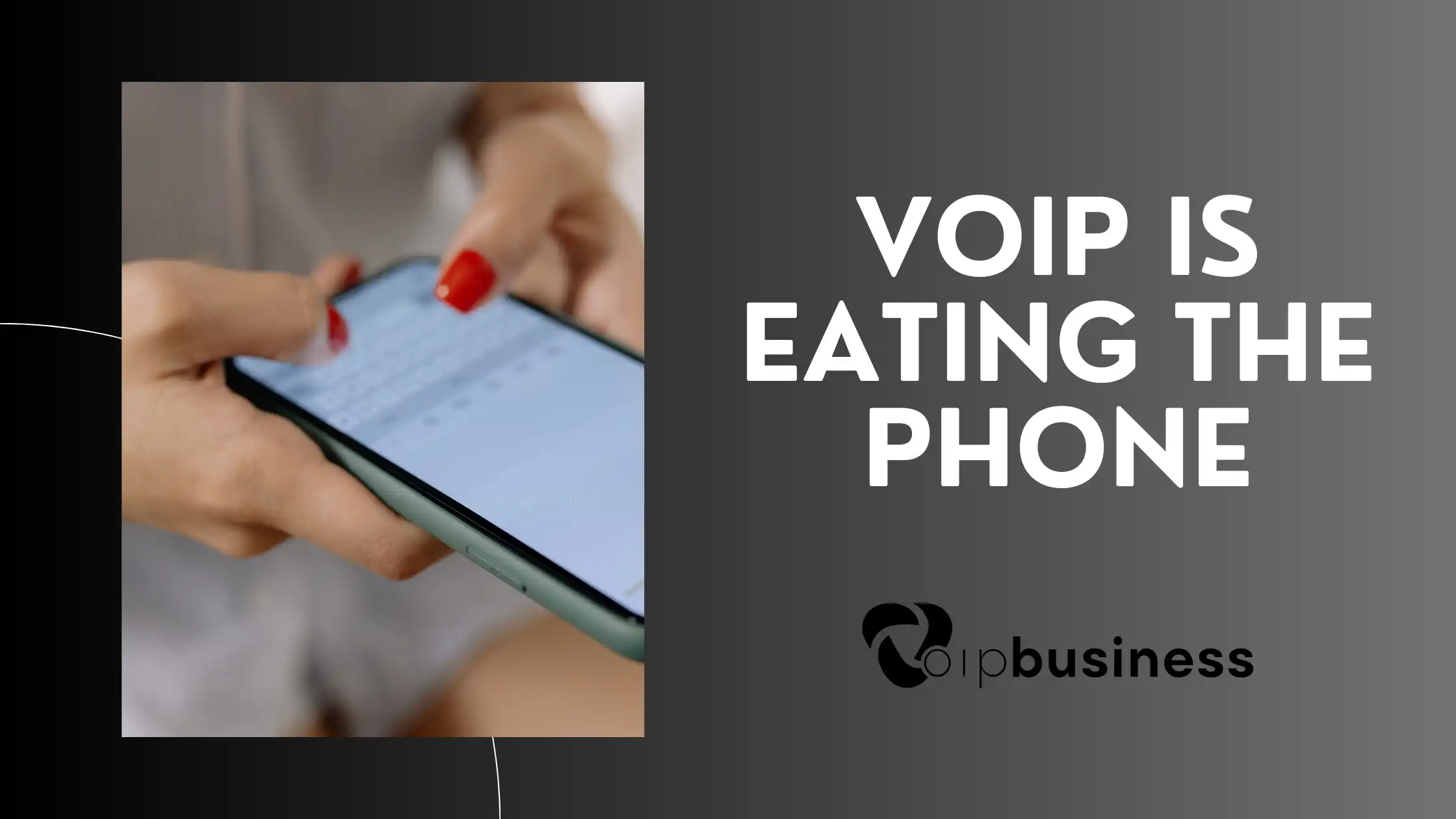
What are the Benefits of a Cloud-Based Phone Systems?
Cloud-Based Phone involves making phone calls over VoIP (Voice over IP) and this involves connecting your voice to the Internet. Cloud telephony enables making outbound calls and also receiving inbound calls through any Internet-connected device. It is a voice service that does not require the use of costly telephone infrastructure, including IP phones and PBX ( Private Branch Exchange) appliances. This kind of phone system is best suited to an organization with a workforce that is off-site either due to remote work or frequently traveling. The benefits of cloud telephony are numerous, one of them being that it is cheaper than a landline service. This blog will discuss the advantages of how Cloud-Based Phone Systems can assist you in your ventures of business. What are Cloud-Based Phone Systems? Cloud computing involves utilizing remote servers that are located in web-based platforms and are used in storing and managing information in an online platform. The cloud has numerous advantages over the conventional on-premises components. These features enable the business to trust the cloud technology without being concerned about its IT infrastructure-related issues and constraints. Cloud telephony is a sophisticated telecommunications service, which is based on cloud computing model. Cloud telephony providers have provided phone systems where all the equipment, software and network connections are remotely based out of the location where a company carries out its business. By so doing, the companies will be able to save money on space, power consumption, installation expenses, and maintenance charges. The cloud calling allows you to receive phone calls through your business phones and any other gadget with an internet connection, like computers, tablets, and smartphones, anywhere in the world as long as you remain connected to the internet. Cloud-based services are gaining popularity among consumers and businesses due to their capability to deliver cost savings, scalability, reliability, flexibility, and simplicity in the use of the services. How Do Cloud-Based Phone Systems Work? Cloud telephony operates on VoIP, which is an abbreviation of voice over Internet Protocol. It is a cloud phone system that functions like the normal telephones of the landline system, except that your voice is transmitted as data packets through the internet. VoIP technology is used to convert voice signals into digital data packets that can be transmitted via the Internet; they are re-transformed back to analog format at the destination in order to be heard. Advantages of Cloud-Based Phone Systems Cloud telephony services have numerous advantages such as improved productivity and lower IT expenses. Whereas the conventional PBX system is set to serve a single physical location with one or more lines, the cloud-based telephone systems can be configured to offer several extensions that can be accessed anywhere. The companies no longer have to be concerned with updating their hardware; all they have to do is to have an internet connection and a web browser to use their virtual phone system. The switching costs between the old phone systems and the cloud telephony system are also high in terms of saving costs. Following are the significant advantages of Cloud-based phone systems: i. Significant Cost Savings The use of Cloud-Based Phone Systems have been growing in popularity as companies are seeking to save their expenses. Under a cloud service, you are only charged for what you use and not for the whole package, which might not be utilised at all. This has made cloud telephony firms less expensive than other phone service providers to use in a similar manner. Moreover,there is no necessity to spend much money on costly hardware, which can help to reduce initial expenses and maintenance expenses over the long term. ii. Easy to Set Up Cloud phone systems are simple to install and no major infrastructure adjustments on your part are required. With the correct service provider they are able to be operational within a day and generate minimal downtime or disruption and a smooth transition. Moreover, cloud telephony systems can be easily configured with easy to use interface that is easy to navigate. iii. Cloud-Based Phone Systems are Scalable Scalability is one of the numerous advantages of cloud telephony, which means that your business can scale up and down with ease and at a low cost as the needs change. As an illustration, a small business can just continue adding more capacity of cloud telephony services to cater to a growing demand in case it expands rapidly. On the one hand, a cloud phone provider also helps in minimizing the cost when the level of usage is not as high as expected, as you can also reduce it. Using cloud telephony provider can save the business some money on hardware expenditure since the business does not have to buy new equipment initially to expand in the future. When your company grows, it is far more difficult to scale up an in-house system. The traditional phone systems tend to subject a company to purchasing additional tangible hardware in anticipation of future demand and then paying high monthly rents without necessarily utilizing all the equipment at a particular time. iv. An Agile Telephone System The past few years have been defined by a revolution in the business world due to the development of mobile technology and more remote employees. Compared to conventional PBX systems, Cloud-Based phone systems are much more flexible and agile. Consequently, call management on business out of office has become as widespread as call answering at a business desk. When you have a cloud telephony system, then you can enjoy the advantage of calling any number in the world with the help of any internet-enabled device without having to frighten yourself over the roaming costs and also the connection problems. The phone system capabilities that would be required of an office desk phone, including call forwarding and call routing, are also available in the device that you are using. There are also other collaboration tools provided in a cloud system to ensure that your business communications are more effective like video conferencing and instant messaging. v. Cloud-Based Phone Systems Can Enhance Productivity Cloud telephony is a unified communications as a service (UCaaS). The unified communications refer to the combination of voice, video, and data among other real-time communications services. It is aimed at making business operations easier through the provision of numerous diverse forms of communication within a single platform. UC may assist in enhancing the productivity, performance, and customer experience and as you have found out, lower the costs. Its implementation may affect the productivity and quality of business in an immense way. It may facilitate the process of monitoring the discussion and processes of team members regardless of their geographical locations. Moreover, the UC can also be used very easily to communicate information within the departments, as well as with clients or customers outside. vi. Greater Reliability and Resistance When a disaster, or an emergency struck, like a power outage, and you were using the traditional phone lines, it is at the mercy of the conditions. The problem of business continuity is nonexistent when cloud telephony is installed on cloud servers; the telephone system you have. Your cloud telephony service can be accessed anywhere and by your business thus becoming resistant to a great deal. Cloud-based phone systems also have the ability to enhance the reliability of your business as reliance on one point of failure goes down. This is achieved through balancing workloads in various data centers which provide redundant connotations, enhancing efficiency. Cloud telephony system is a good choice to any business that desires to decrease the use of costly and old-fashioned hardware and to enhance stability and flexibility in the operations. Choosing a Cloud Telephony Provider It can be difficult to decide on a cloud telephony solution to your business. Cloud-based phone system service providers are numerous, but the most crucial aspect is that they must possess features and services that your business requires at a cost you can afford. The following are some of the considerations to be made when selecting a cloud telephony provider: Reliability and Uptime: Enquire about the reliability and uptime ensure of the provider to avoid maximum disruptions in the services. Features and Functionality: Evaluate the features that are present i.e. call routing, call recording, IVR, mobile integration, voicemail and conference calling. Security: Check with the provider that they have adequate security controls such as encryption algorithms, firewalls and secure data centers to safeguard the sensitive information of customers. Integration Capabilities: Ascertain whether the service has an easy time integrating with the current CRM or helpdesk systems to make it more productive and enabling workflows to become simpler. Customer Support: Investigate the quality of customer service delivered by the supplier, in terms of response times, availability and technical skill. In Conclusion – Cloud-based Phone Systems Cloud-based phone Systems may also be an advantage to small enterprises that require efficient phone features at a low cost and without the hassle of complex hardware and physical office areas. The only thing that you require to maximize the usage of cloud phone technology is a good internet connection, and one of the top providers of business phone systems to provide you with excellent services. After installing your cloud-based phone system, you and your employees will find making crystal-clear calls very easy under the easy-to-use software interface that your employees will love. FAQs – Cloud-based Phone Systems Q1. What are the advantages of a cloud phone? A cloud phone system is similar to a normal phone system in that it provides similar features like call transfer, extension dialing and conference calling. But it also provides these functionalities in a smooth way to the handsets as well as mobile devices. Such mobility is priceless to workers who are mobile and companies that have branches across the globe. Q2. What do Cloud-based phone systems do to your business communication? Cloud PBX, hosted PBX or hosted phone system is a voice over internet protocol (VoIP) technology, which enables phone conversation to be held using the internet. The strategy assists companies to reduce the initial costs of telecommunication infrastructures. Q3. What is the functionality of a cloud phone system? Cloud phone systems is one of the forms of VoIP technology that are used on IP network in the cloud. It is fully Internet-based and operated off-site, which means that it does not require any serious initial costs of telecommunications infrastructure. Q4. Are cloud phone solutions trustworthy? Yes, the best-tier providers will provide up to 99.99% of uptime, which will bring few disruptions. Although they depend on the internet connection, they usually recovers their downtimes in a very short period as compared to the traditional phone systems. Q5. Are cloud telephones capable of supporting remote working? Yes! Cloud phone services enable employees to receive and make calls using any device, and it has also provided other features such as video conferencing, file sharing and call forwarding, which are needed to enhance smooth remote communication. Read More : History of VoIP and Internet Telephony: From The 1920s To Present Day








